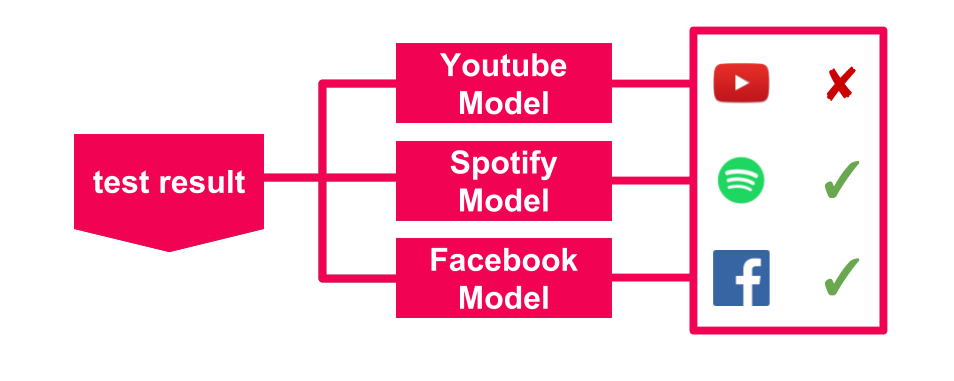ACQUA is an Application for prediCting QUality of Experience (QoE) at Internet Access. It is developed by the Diana team at Inria Sophia Antipolis – Méditerranée and is supported by Inria under the ADT ACQUA grant. The scientific project around ACQUA is supported by Inria Project Lab BetterNet and the French National Project ANR BottleNet. ACQUA presents a new way for the evaluation of the performance of Internet access. Starting from network-level measurements as the ones we often do today (bandwidth, delay, loss rates, jitter, etc), ACQUA targets the estimated quality of experience related to the different applications of interest to the user without the need to run them (e.g., estimated Skype quality, estimated video streaming quality).

From one network measurement to multiple QoE predictions
An application in ACQUA is a function, or a model, that links the network-level and device-level measurements to the expected quality of experience. Supervised machine learning techniques are used to establish such link between measurements both at the network level and the device level, and estimations of the Quality of Experience for different Internet applications. The required data for such learning can be obtained either by controlled experiments as we did in a recent communication on Skype Quality of Experience, or by soliciting the crowd (i.e. crowdsourcing) for combinations (i.e. tuples) of measurements and corresponding application-level quality of experience.
Our current work is concentrating on using the ACQUA principle in the estimation and prediction of the quality of experience for main user’s applications (we refer to this video and this paper for more details).
The ACQUA Android application is supposed to be on one hand the reference application for QoE forecasting for end users at their Internet access, and on the other hand, the feedback channel that allows end users to report to us (if they are willing) on their experience together with the corresponding network measurements so as to help us calibrating better and more realistic models. For this calibration, we are currently performing extensive, efficient and automatic measurements in the laboratory, we will count on end users to help us completing this dataset with further applications and more realistic network and user conditions.
ACQUA is mainly meant for end users, but it is also of interest to (mobile) network operators and content providers to predict the QoE of their customers and their networks without each time having to run expensive application-level traffic and to involve real users.
Why is ACQUA?
The Internet usage has changed drastically the recent years. We moved from an Internet meant to connect hosts together with basic offered services such as email, file transfer, or remote connection, to an Internet that is meant to consume digital content and that hosts plethora of services of all types including voice over IP (VoIP), video streaming, online shopping, games, news, etc. This has in particular changed the expectation end users have in terms of the quality of the Internet service. We moved from an era where the best effort nature of the Internet was driving the expectations of end users, mostly knowledgeable in Internet technology and Internet protocols, to an era where we want the best possible quality from the Internet and where any interruption of any service can cause frustration at end users with a serious economical impact. This important change has increased the pressure on network operators and service providers, more and more interested by capturing the Quality of Experience at end users, rather than simply capturing the physical properties of their Internet connection (e.g., bandwidth, delay, jitter, or loss rate). For example, a service provider cannot afford to wait for customers’ complaints for having low quality of experience for their main applications, as according to a recent Accenture survey, about 90% of users simply change their network provider when they undergo low service quality without even taking time to give feedback to their operator before leaving. Therefore, it is essential that network operators and service providers have means to continually measure the Quality of Experience (QoE) and improve it as necessary. The difficulty being that, as compared to Quality of Service (QoS), QoE is a subjective measure of end users’ satisfaction with the service they are getting from the network.
On the other hand, end users themselves are mostly equipped with measurement tools that observe physical performance of their Internet connection (e.g., bandwidth, delay, and loss rate) without providing Quality of Experience information. Despite the presence of basic QoE indicators in popular applications like Skype or Viber, there is a lack of a general solution for a fine-grained evaluation of the quality of Internet access in terms of QoE. A general solution to assess QoE would help end users and providers as on the one hand it would provide end users with a feedback that they can easily understand, and hence avoid confusion in the way they interpret the performance of their Internet access, and on the another hand, it would give providers an invaluable means for the profiling of the Internet accesses in terms of applications that can run with their QoE, hence allowing them a more transparent relation with their customers.
